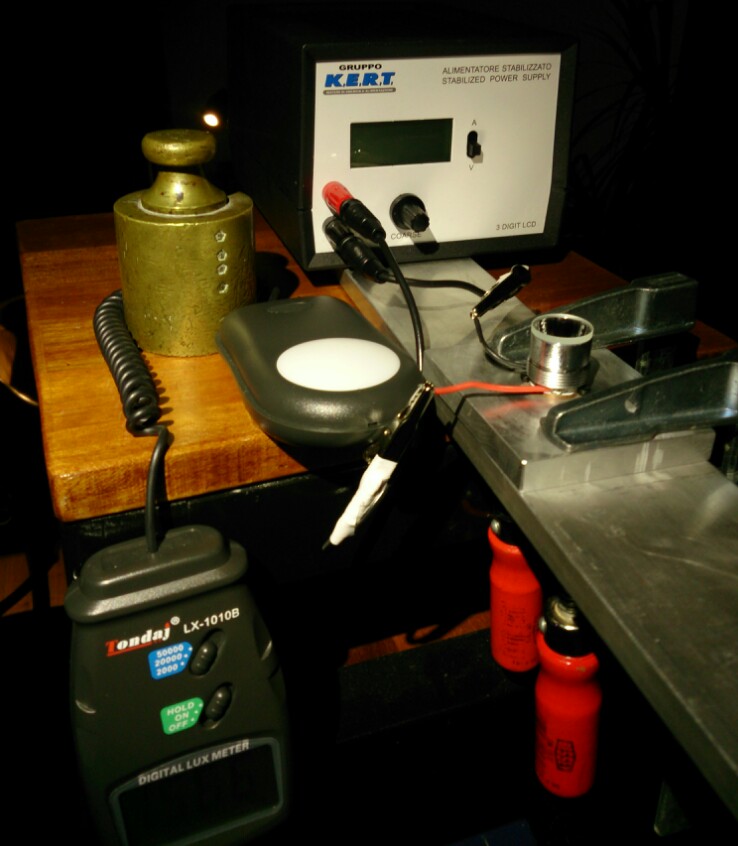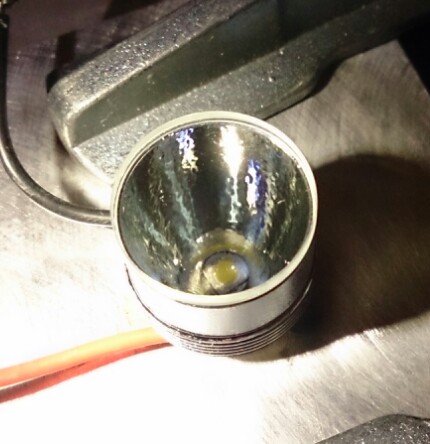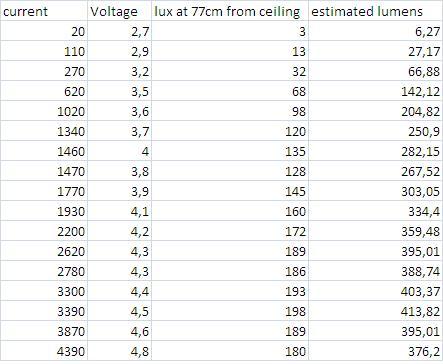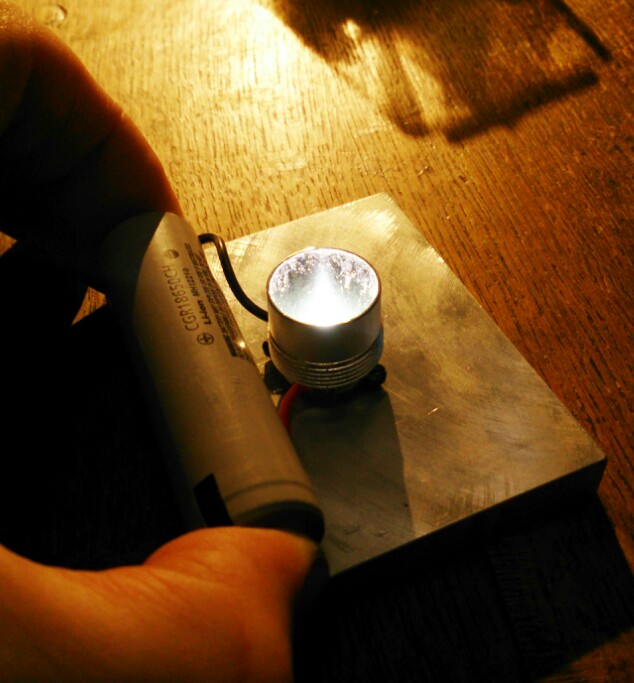I had high hopes for some improvement using the 219 on copper, but I did not get more than 1.3amps from a 18650 battery through the led, despite the use of a 2200mA Nanjg driver. Vestureofblood got a bit more from a 2800mA driver, but still under 2A.
So despite of me not being an electronics expert, I did an attempt at testing the Nichia219 on a 16mm Sinkpad to see what is going wrong. And I must admit again (as in my recent MT-G2 measurements) that I did not do extensive measures to calibrate my equipment, so the same disclaimer is valid as in the post about the MT-G2 measurements: the numbers in this post are given as is, without any claim of great accuracy (and I truly admire those that really can do those accurate tests  ). But I am confident of the overall trend of how the 219 performs on copper.
). But I am confident of the overall trend of how the 219 performs on copper.
Oh, and I did these measurements because I myself was curious about this particular led, it is not that i am planning many more of these tests, I do not have proper equipment for that, and lack the will to do all the checks and controls that go with real accurate testing.
This is the set-up:

This is the led board, well screwed down on lots of aluminium, with thin layer of Arctic Silver in between:

And to be able to measure the output without a Integrating Sphere I placed a reflector on top with a glass lens (this time a cheap AR-coated one from FT), so a ceiling bounce lumen estimate could be obtained that can also be regarded as a value that can actually be achieved in a flashlight build.

The led was directly coupled to the power supply with short thick leads, I used both the current and voltage readings that were given by the power supply. I suspect at this time that the voltage readings from my power supply are about 0.15V higher than the real Vf of the led so please substract 0.15V from the Voltage values in the table and graph to get an idea of the Vf, but more about that later.


So what are my thoughts of this?
1)on an alu board the 219 output levels out at 1600mA, on copper it is around 3A 
2)the max output is going up considerably as well, the above values are 'simulated OTF' numbers but I guess the maximum bare led output would be close to 500 lumens (compared to max 300 on aluminium, see match's tests of the 219)
3)this well heatsinked the led can withstand 4.4 amps! (but for the maximum output you don't want more than 3)
4)the Vf is going up fast!, and at max output it is more than 4.2 volts, so even with a single li-ion cell at direct drive you do not get there. (So where is that single li-ion 3 amp boost driver???  )
)
5)on the other hand, if you do not care about constant current or modes, just skip the driver and run the 219 directly from a li-ion battery (mag incan-style) , how easy is that? 
6)you can see some irregularities in the graph, apart from lousy measuring, one reason is that not all values were taken in one session turning the power up, it seems that after the first session at high current, the current at a already measured voltage has increased somewhat (or the other way around: that the Vf at a certain current is somewhat lowered). This supports indeed the idea that you can 'burn in' this led to lower the Vf a bit (no hard evidence though).
So getting more confident about my test results I just tried this:

It was a fully loaded Panasonic CGR18650CH (IMR) battery, and it works well indeed, I did not do a current reading but the initial output was estimated 369 lumen (OTF of the reflector+glass lens), which corresponds to a current of a bit over 2A. It declined steadily in 10 minutes to 313 lumens, nicely following the discharge at 2A according to HKJ's test of this battery.
With the fully loaded battery under the load of this Nichia219 I measured 4.08V with my (good quality, but it is not a calibrated Fluke) DMM. The above graph however, reads 4.2V at the 369 lumens that was measured with this battery, this is why I guess that the voltage readings from my power supply are about 0.15V higher than the real Vf of the led (this of course is another wild guess  ).
).
Conclusion: So what to do to get the most out of the Nichia 219 on copper? A suggestion to Old Lumens would be to power it with four NiMh batteries (max 5.4 volts?) and use a Nanjg 501C 3A driver to burn off the more than 1 excess Volts (but I don't know if this driver will be happy with this amount of heat?). I myself like the idea of just direct drive it off one 18650 li-ion 
Thanks for reading,
djozz
 ).
).

